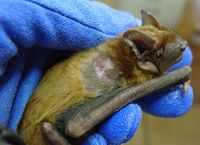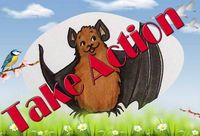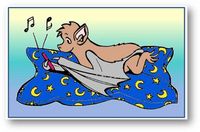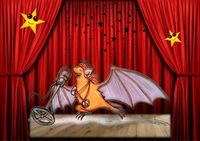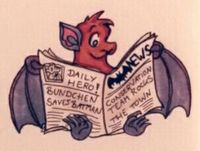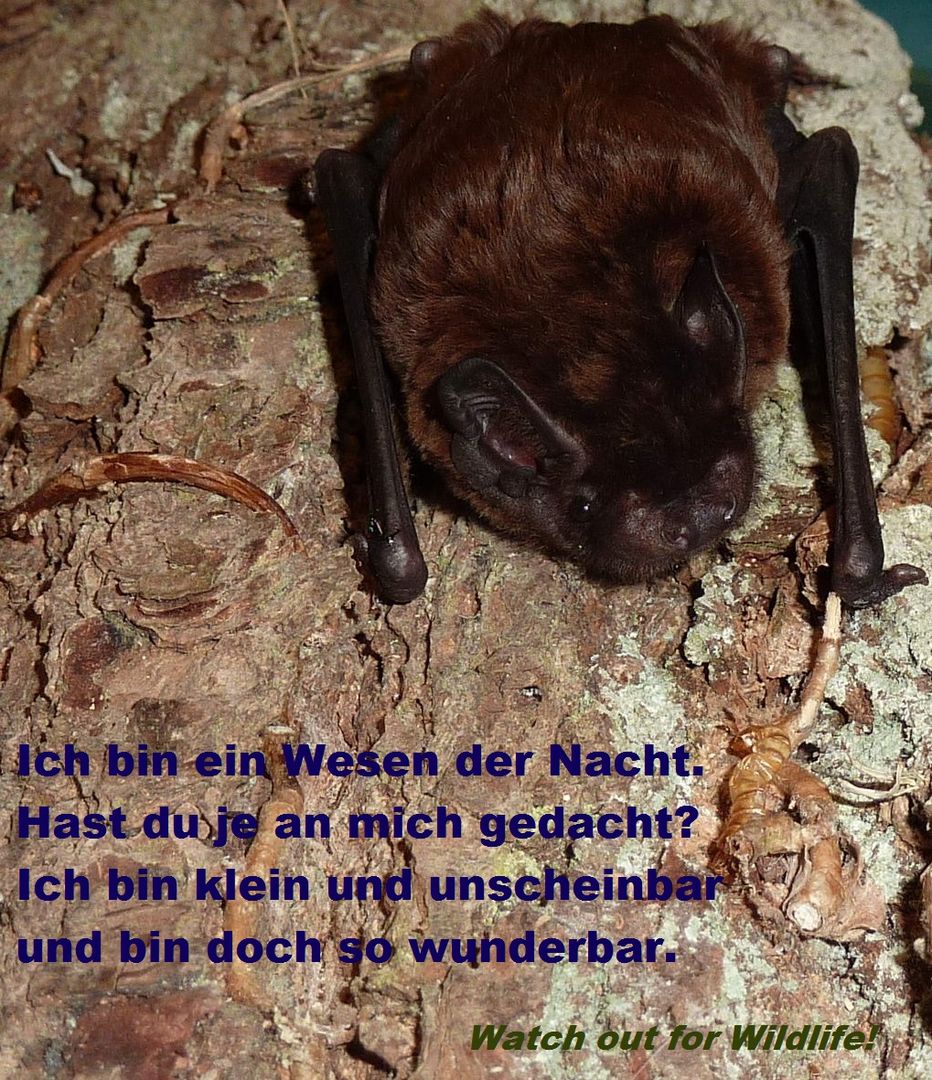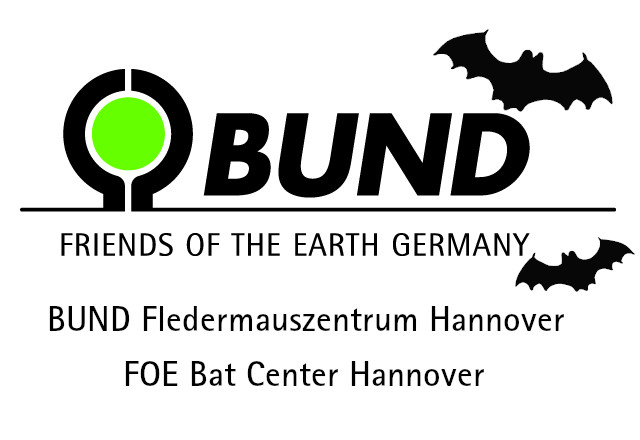
Important
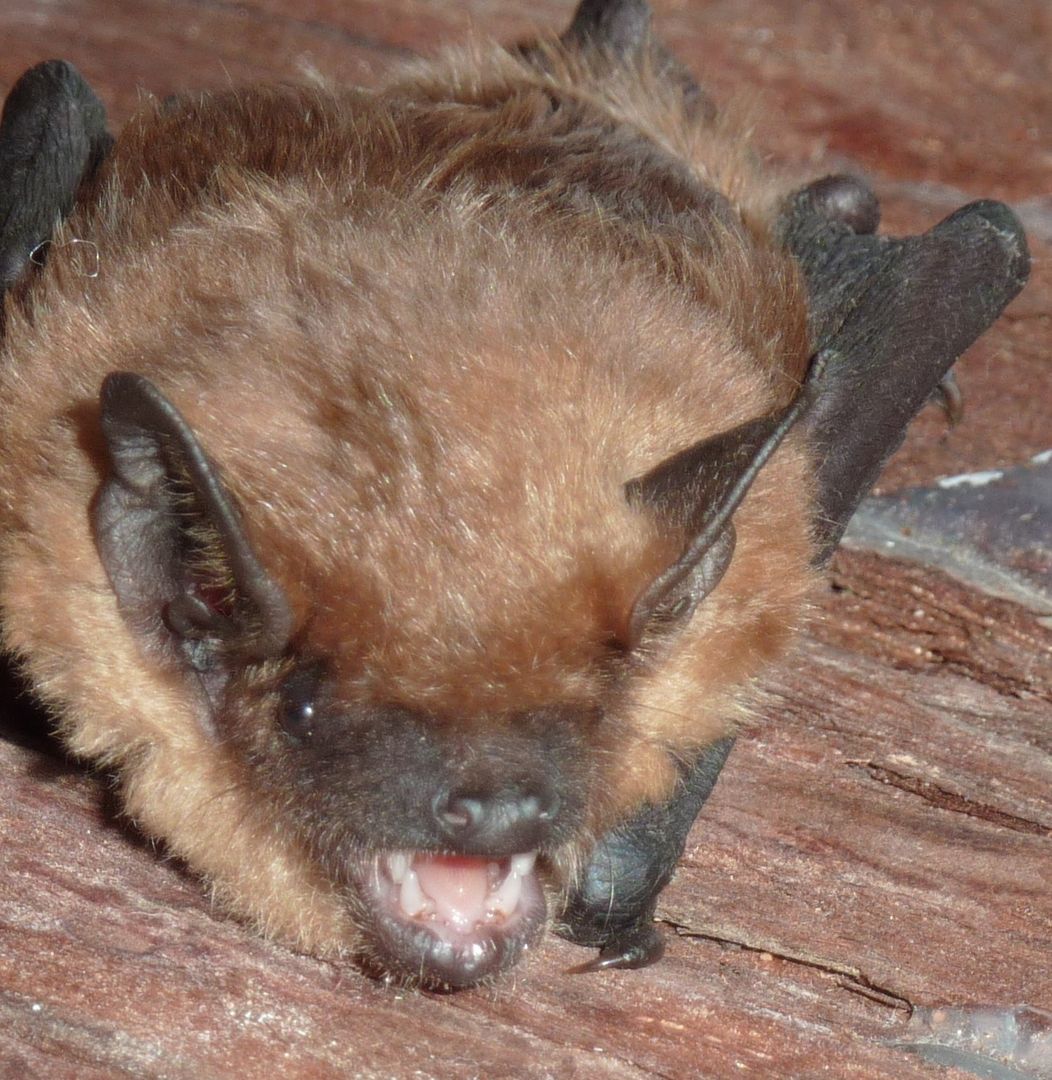 Breitflügelfledermaus Eptesicus serotinus
(Gudrun Becker
/
www.bund-fledermauszentrum-hannover.de)
Breitflügelfledermaus Eptesicus serotinus
(Gudrun Becker
/
www.bund-fledermauszentrum-hannover.de)
Injured or weakened bats belong immediately in expert hands.
This release information is specifically intended for bat experts only. It is not a "guide" for laymen.


Freedom - the goal of working with bats
 Zurück in die Freiheit // back to freedom
(Gudrun Becker
/
www.bund-fledermauszentrum-hannover.de)
Zurück in die Freiheit // back to freedom
(Gudrun Becker
/
www.bund-fledermauszentrum-hannover.de)
As soon as a bat can live by itself in nature, it must be released - according to the nature conservation law. When and how the animals are released depends on the animals' fitnes.
At the BUND Bat Station, the animals that had to be hospitalized due to their injuries are professionally prepared for releasing.
Bats are wild animals and it is our job to do everything we can that the bats can be realeased and live wild and free.
Flight training
The training must be done in the evening or at night in order to use the natural activity phase of the bats. Before training, it is important that the animals have warmed up sufficiently to flight temperature. If the animals are trained during the day or if the trainers lack the patience to wait until the bats are really warm, the training results will be correspondingly worse. This could unnecessarily delay a release!
Releasing back to the wild – what to consider!
The release is weather-dependent and depends on the fitness of the bat, too.
Before the release, the animals must be trained for several days after being cured from an injury. The way of live of the animals is important - for example a nyctalus noctula can fly very long distances. Therefore the animals must have a very good physical condition and must be trained very very well. Moreover, their hunting speed is very high, which they must reach in the training, too.
Myotis daubentonii hunt above lakes and rivers, and they need to have a very good condition!
All bats must be able to take off from the ground without any assistance. This is important to survive in the wild! Myotis myotis need to be very quick and it must be easy for them to take off from the ground several times in the trot.
It is important to write down the results of every training-lesson. An animal that can fly well on one day, maybe the next day is no longer fit, perhaps because it had spent the day before all the energy reserves.
The training must always take place in the evening or at night, in order to make use of the activity phase of the animals. Before the training, the animals must have warmed up themselves. When animals are trained during the day or the trainers have not the patience to wait until the bats are really warmed up, the results of the training won’t show you the real condition of the bat. This could unnecessarily delay the release!
Careful preparation of the release
The weather has to be ok, it should not be so stormy, rainy or frosty.
The animals must be returned to the location where they were found. Bats are very social animals, they know their group members. They also know their habitat and hunting areas.
Just before the period of activity (evening) you should arrive with the animals at the location of release. As soon as the wild bats start flying around, you can release the bat. Make sure, that the bat has warmed up itself before taking off! Should no wild bats appear that evening, it is important to check again whether all the above mentioned conditions (weather / location) are right. If not, it is better to cancel the release! If all factors are positive, the animals can be released into the wild, even when no others bats are flying.
Ideally, you check the area of the planned release one or two days before. Then you get to know exactly the flying time and territory of the wild bats.
For nyctalus noctula(s) you better bring a box with an open entrance hole very high (!) into a tree at the location where the bat should be released. The nyctalus noctula(s) should be placed in that box before sunset. Later on the nyctalus noctula(s) will leave the box by itself/themselves. Once all the animals have left the box, the box can be removed. Make sure, that the box is empty!
Recommended labeling for transport boxes for animals - here bats:
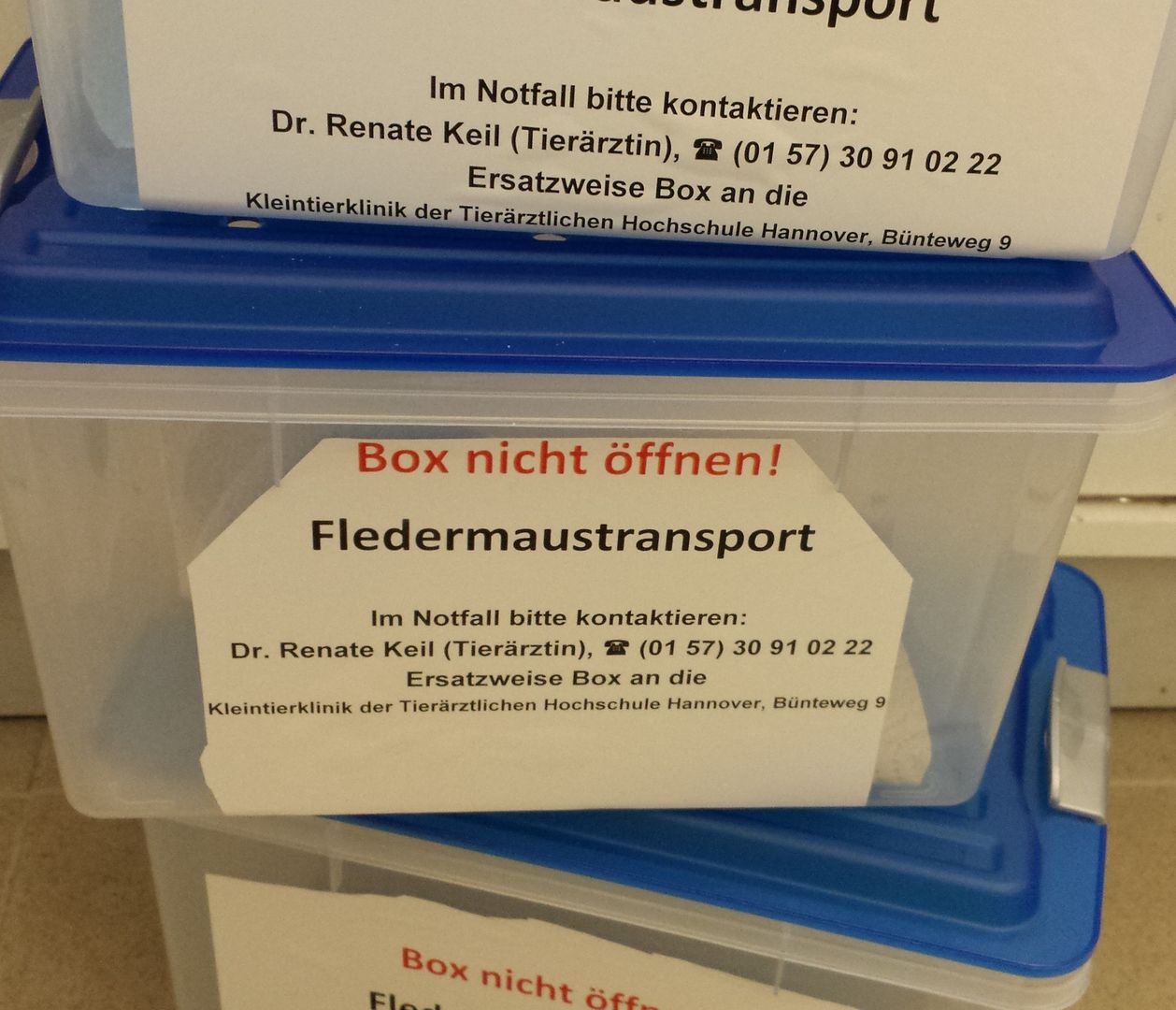 Transportboxen für Fledermäuse // transport boxes for bats
(Gudrun Becker
/
www.bund-fledermauszentrum-hannover.de)
Transportboxen für Fledermäuse // transport boxes for bats
(Gudrun Becker
/
www.bund-fledermauszentrum-hannover.de)
The stickers say that there is a bat in the box and that the box must be brought closed to our vet. Why? We hope it will never happen, but it can still happen that our response team is involved in a traffic accident. With the stickers, the rescue workers at the scene of the accident can rescue the bat and bring it to our vet. We recommend that everyone transporting an animal should think about what will help rescue workers do the right thing for the animal in case of an accident.

================

